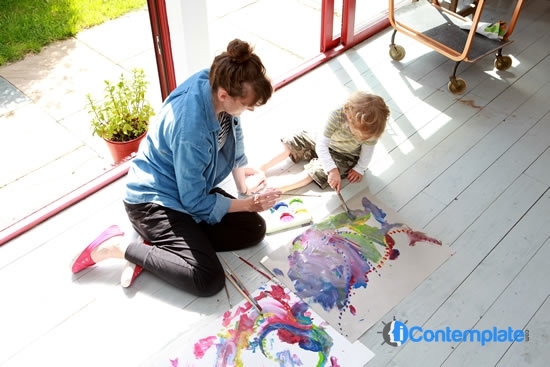Art therapy is often overlooked by parents across the UK, for the simple reason that the vast majority may not in fact be aware of its existence. On the surface, art therapy sounds more like a vocational exercise geared toward improving skills and talents in a specific subject area, rather than a therapeutic treatment process that can aid a child’s development. However, when implemented by a leading professional with a lifetime’s experience in the field, art therapy has the potential to be one of the most powerful forms of therapy ever brought to widespread use.
In short, art therapy involves the use of multiple arts and crafts for the purposes of channelling a child’s inner-self and providing them with an alternative means of communication. It has such incredibly wide-reaching applications and can be brought into use for an enormous variety of developmental conditions and barriers. From children with diagnosed speech disorders right through to those who may be reluctant to communicate for emotional reasons, art therapy has the very real potential to succeed where even some private speech therapists may be unable to reach the child effectively.
Communication Without Words
For example, the single most wonderful and unique thing of all about art therapy is the way in which it provides children with the opportunity to communicate without having to use words. Even as adults, we often find it impossible to convey how we’re feeling or what we really want to say using words alone – for a child with a limited vocabulary it can be even more difficult. Through various art forms, a child can accurately and comprehensively get across what it is they want to say without having to voice a single word.
Feeling Understood
It can be extremely frustrating for any child to feel as if they are not understood by others – especially those with diagnosed speech development issues or learning difficulties. When a child feels as if they are not understood or perhaps not understood correctly, the instinctive reaction is to retreat into their shell and show growing reluctance to speak at all. In such instances, art therapy provides them with multiple avenues to explore by way of various art forms that could allow them to say what they could never put into words. And the more clearly understood the child feels he or she is, the more confident they will be to continue communicating.
A Sense of Achievement
Speech and language represent skills, which just like any other must be worked hard for and all respective successes celebrated. When a child feels that he or she is failing to grasp basic communication, their confidence will inherently take a rather severe knock. By contrast, when a child is able to communicate successfully they are instilled with a sense of achievement that breeds motivation and further effort. This is exactly what art therapy is all about as while they may have lost confidence in their ability to communicate through words and language, every artistic success will intensify their confidence and desire to continue progressing.
A Safe Outlet
Art therapy has the potential to be one of the most effective forms of therapy of all for children who may have issues with pain, rage, anger, short tempers, fear, guilt or other similar emotional states. Just like adults, kids of all ages are prone to bottling up their feelings if for the only reason that they may not yet have the speech and language skills to express what it is they are feeling to others. Of course, it’s common knowledge that this is not a healthy way to handle feelings, though in the case of kids there’s often little they can do other then perhaps throw the occasional tantrum. Through art therapy however, kids are given various mediums via which to express everything that’s going on deep inside them, giving them a safe outlet for feelings they may otherwise have kept bottled up and hidden.
Skills and Talents for Life
Last but not least, it’s also worth remembering that the moment a child finds an artistic pursuit that allows them to communicate in a manner impossible with words alone, chances are they will immediately find themselves building a passion for the pursuit in question. Be it music, painting, pottery, dance or really anything else across the board, there’s every chance that the therapeutic exercises undertaken will become a genuine hobby and passion for the child’s long-term future, building skills and talents for life. Art therapy has the potential to positively influence a child’s development like no other form of therapy currently available.
Helpful Links:
Online Directory of Audiology and Speech-Language Pathology
http://www.asha.org/proserv/
Self-Help Groups for Speech, Language, and Swallowing Disorders
http://www.asha.org/public/
United States Society for Augmentative and Alternative Communication
Speaking Freely: Empowering Speech Therapy Apps
http://www.attsavings.com/
10 Tips for Selecting Toys for Your Speech Delayed Child
http://www.friendshipcircle.
Learning Disabilities Association of America
http://ldaamerica.org/
American Academy of Audiology – Resources for Kids & Teens
http://www.audiology.org/
Rights for Those with Hearing Loss
http://www.ovationhearing.com/
Hearing Loss Association of America
Career Assistance for Deaf and Hearing Impaired
http://www.hloom.com/career-
Putting the Public Back in Public Health
https://www.couponchief.com/guides/savings_guide_for_those_with_disability





